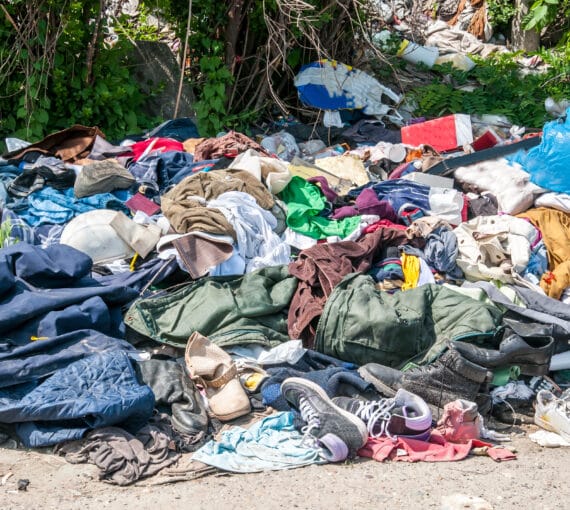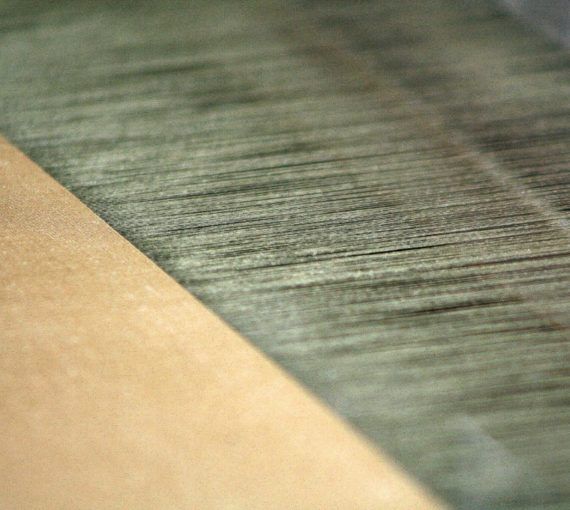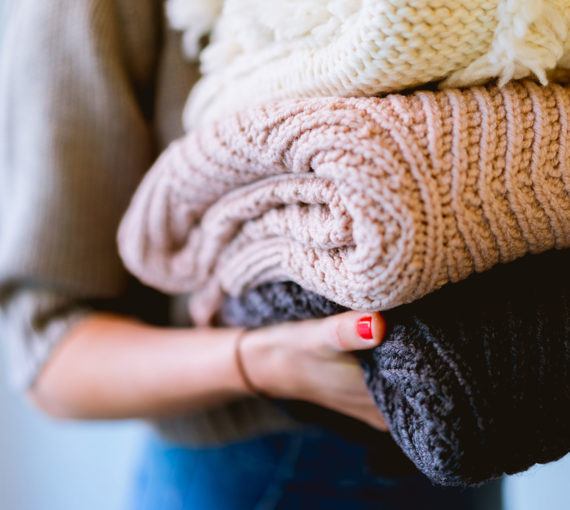
Thrift or consignment store shopping is an art and a treasure hunt. Help build a circular economy — choose a wardrobe of used and pre-loved clothes. (Photo: Artificial Photography via Unsplash)
Today, 70 per cent of the American economy is based on consumer goods. And where America goes, a world enmeshed in the global economy follows.
To maximize consumerism, manufactured disposability and “planned obsolescence” ensure there is continued demand for products. Disposability implies that something we’ve finished using disappears after it’s been discarded. In the biosphere, nothing goes away or disappears. Everything ends up somewhere.
The fashion industry is particularly notorious for this. Fashion brands appeal to people’s thirst for novelty by creating and changing trends quicker every year. And, they produce more and more clothing to satiate that thirst. Already, apparel production contributes up to 10 per cent of global carbon emissions and is a significant source of water pollution. Most of the clothing we buy ends up as waste in landfills.
As consumers, we can make a conscious choice to curb our consumption by using thrift and consignment options. It helps contribute to a circular economy. Plus, who doesn’t love a treasure hunt? Everything you need has likely already been created!

From runway to landfill
Fast fashion may glitter and gleam, but its environmental footprint is far from fabulous.
Second-hand shopping tips
You can always alter!
- Don’t guess size or fit. Always try on items. Then hem, repair, resole, etc.
- Study the clothes you love to wear that you already own. That way you can eyeball sizes and shapes and make good choices in places where you can’t try things on.
Choose natural, sustainable fibres
- Avoid synthetics.
- Prioritize items made from wool, organic cotton and bamboo, silk, hemp, linen, etc.
Look for well-made garments
- Used or new, check seams, elastics, etc.
- Choose items built to last decades and outlive trends.
Choose local
- “Made in Canada” (or nearby) is one way to ethically source.
Go often
- New items arrive all the time.
Shop seasonally
- Shop in season or as needed to avoid buying items you might not want or need later.
- Shop at the end of seasons when items you know you will need later will be discounted; e.g., shop in late winter or early spring for winter mitts.
Go for kids, too!
- Find a kids’ consignment store and put the money you save into something else.
- Buy for next year when you see a good deal, then store it (silica gel packs can help).
Treat/hide damage
- Try an eco-friendly stain remover for the smudges on items you can’t pass up.
- Consider dyeing the piece, or covering the spot/tear with a patch, button or embroidery.
- Maybe a good washing will help (don’t dry clean — wet clean).
Wash before you wear
- Many thrift and consignment stores have new items with tags still on. Always wash new clothes to reduce your exposure to formaldehyde.
- Wash used items to remove unwanted scents, synthetic fragrances and some chemical treatments. (You may need to air them outdoors or soak in baking soda and water too.)
Shop with friends
- Not only is it more fun to go with friends, it’s also nice to have a second (or third) opinion.
Look online
- Search websites, apps and social media platforms with peer-to-peer marketplaces.
- Join or start a buy nothing group (usually hosted on Facebook) in your neighbourhood to post and find second-hand items for free.
Search for special occasions
- Check out consignment stores specializing in formal wear (e.g., bridal) and look for eco-friendly fabrics like organic cotton, linen, vintage lace or “peace silk” (made without harming or killing the silkworms).
- Wet clean pieces in good condition and find a tailor to update/alter.
- Look for silks that are less processed (rougher in texture) and other unbleached fabrics.

Pick peace silk
Silk is made from silkworm cocoons. Standard factory silk is the most processed. “Peace silk” is the Earth-friendliest option.
For peace silk, the moths leave their cocoons and live out the last five days of their 70-day life cycles. The silk is collected and woven on hand looms, mostly in northern India. Many small villages still harvest wild silks — often left their natural, golden colour — to use in traditional fabrics and textiles sent worldwide.
Hand down, consign, donate, swap
Get the stuff you don’t need or want into the hands of those who do!
- Set up an account at an adult or kids’ consignment store.
- Sell, exchange or offer items free online.
- Donate what you can’t use or hand it down.
- Host a clothing swap — a great way to build community and a circular economy.
- Join or start a buy nothing group.
Still unsure of the value of shopping second-hand?
Here’s what David Suzuki Foundation staff said about why they choose to thrift shop:

Environmental benefits
- Keeps clothing out of landfills.
- Lowers your carbon footprint.
- Reduces chemical pollution caused by factory-produced clothing.
- Uses less water than factory-produced clothing.

Variety
- Find unique, timeless and one-of-a kind pieces.
- Revamp your wardrobe for a lot less than purchasing new.
- Try items you’ve been curious about but are hesitant to purchase because of price.
- Express your individuality and creativity.

Support a charity
- Find thrift stores that partner with organizations that direct proceeds to supporting a cause.


